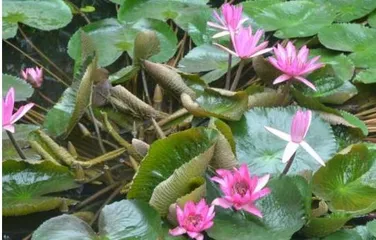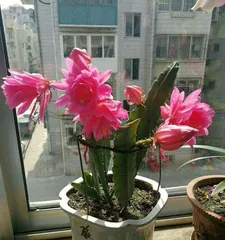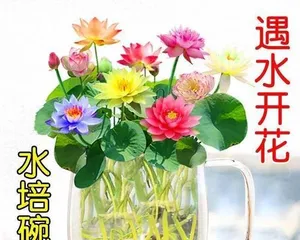Ginger Lily is a beautiful ornamental plant, but many people are unsure if it is suitable for indoor cultivation. This article will introduce the growth characteristics and care techniques of Ginger Lily, as well as the key points for growing flowers indoors, hoping to help everyone better understand Ginger Lily and successfully care for it indoors.

The growth environment and characteristics of Ginger Lily. Ginger Lily is native to tropical regions and requires a warm, humid, and well-lit environment to grow. It prefers acidic soil. Its leaves are large and beautiful, with diverse colors, and it has a long flowering period.
Advantages and disadvantages of growing Ginger Lily indoors. Growing Ginger Lily indoors can protect it from climatic and environmental influences, increasing the chances of success. However, indoor environments often lack sufficient sunlight and humidity, requiring special light and water management.

Choosing the right pot and soil. Ginger Lily needs a spacious, moderately deep pot with good drainage, and it requires acidic soil that meets its preferences.
Light management. Ginger Lily needs light but cannot tolerate direct scorching sun. They require at least 6 hours of sunlight per day and must be gradually acclimated to direct sunlight. Indoors, placing it by a window or using artificial light are viable options.
Temperature and humidity management. Ginger Lily's growth requires suitable temperature and humidity. The ideal temperature is generally between 22°C and 28°C, and the humidity should be kept above 60%. Indoors, a humidifier or a sprayer can be used to increase humidity.

Water management. Ginger Lily does not like overly wet or dry soil; it needs to maintain moderate moisture. Water once or twice a week, with more frequent watering in the summer. Be sure to avoid waterlogging the soil, which can cause root rot.
Fertilizer management. During the growing period, Ginger Lily needs a moderate amount of nutrients. You can use an appropriate amount of organic fertilizer to meet its growth needs.
Pest and disease prevention. Ginger Lily is susceptible to powdery mildew and aphids. Regularly inspect the plant and leaves for any signs of pests or diseases and take timely measures to control them.
Ginger Lily varieties suitable for indoor care. Due to the wide variety of Ginger Lily, different varieties have different adaptability. Varieties suitable for indoor care include Red Ginger Lily, Deep Purple Ginger Lily, etc.
How to propagate Ginger Lily. Ginger Lily can be propagated by stem cuttings or division. Stem cutting is more suitable in spring and autumn.
How to prune Ginger Lily. Ginger Lily needs regular pruning to maintain its shape and health. The main task is to cut off the flower heads and dead branches after the flowering period to avoid affecting new growth and flowering.
How to handle Ginger Lily after the flowering period. Ginger Lily has a long flowering period, but it will eventually wither. After the flowering period, move it to a place with less light, reduce watering and fertilizing to help it enter a dormant period.
How to prevent Ginger Lily buds from dropping. Ginger Lily buds are prone to dropping, usually due to unsuitable temperature and humidity. Pay attention to maintaining suitable temperature and humidity before and during the flowering period.
The beautiful uses of Ginger Lily. The beauty and unique shape of Ginger Lily make it a very popular ornamental plant. It can be used to decorate the indoor environment and add interest to life.
Ginger Lily is suitable for indoor care, but attention needs to be paid to management aspects such as light, water, and temperature. By choosing suitable varieties, pots, and soil, and by regular pruning and pest and disease prevention, you can successfully grow Ginger Lily indoors and enjoy its beauty.